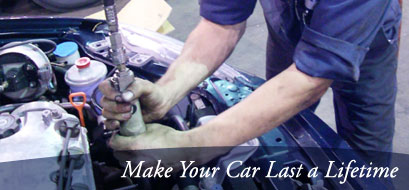Timing, Fan and Serpentine Belt Replacement
Timing Belt
The timing belt is a notched rubber belt that allows the crankshaft to turn the camshaft. The camshaft opens and closes the valves in synchronicity with the movement of the pistons. Thus the name, “timing belt.” A timing belt may also be called a Gilmer belt or a camshaft drive belt.
If your timing belt breaks, your engine will stop working, stranding you wherever you may be. Even worse, it could cause major engine damage. That’s why it’s important to have your timing belt regularly inspected. At Auto Kruser's we can do the job.
We’ll look for two things—wear and slippage. Cracks or stripping indicate it’s time for belt replacement. If the belt is loose or it’s slipped, the valves could open and the wrong time and be struck by the pistons, causing major damage. Once again, a good reason for an inspection at Auto Kruser's.
Warning sounds include a slapping noise coming from your engine. This indicates a slipped belt.
Generally, timing belts should be replaced every fifty to sixty thousand miles.
Serpentine Belt
Serpentine belts, also known as drive belts, provide power to the air conditioning compressor, power steering pump, cooling fan and air injection pump and more.
If your serpentine belt breaks, all of the engine parts it is powering will stop working. Your engine could overheat and be damaged. It’s very important to have your serpentine belt inspected regularly. Just bring your vehicle to Auto Kruer's.
We’ll look for cracks, wear, and stripping—all signs your serpentine belt is in danger of failing. Like the timing belt, it’s recommended to have your serpentine belt inspected every time you have your oil changed.
Warning sounds include a screeching noise coming from your engine, especially during start-ups on cold mornings or on sharp turns.
Studies have shown that serpentine belts most often fail between 36,000-50,000 miles. Most experts recommend you have your belt replaced earlier.
Hoses
Coolant hoses include the upper radiator hose, the lower radiator hose, heater hoses and in some cars the bypass hose.
Hoses provide a flexible connection for coolant flow between the engine and the radiator and the engine and the heating block.
Auto Kruser's recommends you have your vehicle hoses—and accompanying clamps—inspected twice a year. Tiny cracks can form from the inside that can eventually lead to a burst hose and overheated engine.
See Auto Kruser's for expert maintenance on belts, hoses to practically everything else that keeps your car rolling.
For expert car care and repair, "Don’t Worry… Call Auto Kruser's!"
That's… Kruser with a 'K', Cool guys with a 'C'


